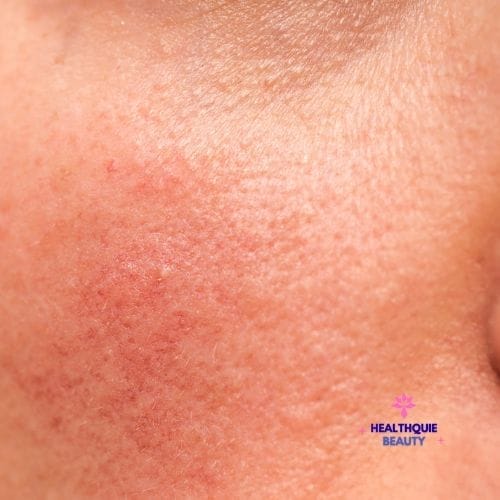
\"How to Know Your Skin Type and Take Care of It Naturally\"
Understanding Skin Types:
How to Identify Yours and Care for It Naturally
Your skin is your body’s largest organ, and understanding its type is the first step toward healthy, glowing skin.
Each person’s skin is unique, but it generally falls into one of five main categories:
normal, dry, oily, combination, or sensitive.
Knowing your skin type allows you to choose the right skincare products, avoid irritation, and maintain your skin’s natural balance.
In this article, we’ll walk through each skin type, how to identify yours, and the best care practices for each.
Why Skin Type Matters
Your skin type affects how your skin looks, feels, and reacts to products and the environment.
Using the wrong routine can lead to dryness, breakouts, or irritation.
That’s why knowing your skin type helps you build a skincare routine that truly works.
🧴 The 5 Main Skin Types and Their Characteristics
1. Normal Skin
Characteristics: Balanced moisture, few blemishes, no severe dryness or oiliness, smooth texture, even tone.
How It Feels: Comfortable and soft, not too tight or greasy.
How to Care for It:
Gentle cleanser to maintain balance.
Lightweight moisturizer to hydrate without heaviness.
Sunscreen daily to protect from UV damage.

2. Dry Skin
Characteristics: Tightness, flakiness, dull tone, rough patches, fine lines may be more visible.
How It Feels: Tight or itchy, especially after washing.
How to Care for It:
Hydrating cream-based cleansers.
Rich moisturizers with hyaluronic acid, ceramides, or shea butter.
Avoid hot water; use lukewarm for cleansing.
Humidifier use in dry climates or seasons can help.

3. Oily Skin
Characteristics: Shiny appearance, enlarged pores, prone to acne and blackheads.
How It Feels: Greasy by midday, especially in the T-zone (forehead, nose, chin).
How to Care for It:
Gel-based or foaming cleansers to remove excess oil.
Oil-free, non-comedogenic moisturizers.
Exfoliate 1–2 times a week to prevent clogged pores.
Blotting papers or mattifying powders for shine control.

4. Combination Skin
Characteristics: Mix of oily and dry areas, usually oily T-zone and dry cheeks.
How It Feels: Varies by area; some parts greasy, others tight or flaky.
How to Care for It:
Gentle cleansers that don’t over-dry.
Use light moisturizer overall, with richer cream on dry areas if needed.
Spot treatments can be used for oily zones.
Balance is key — avoid harsh products.

5. Sensitive Skin
Characteristics: Redness, burning, stinging, frequent irritation, often due to harsh products or weather changes.
How It Feels: Reactive, especially after using new or fragranced products.
How to Care for It:
Use fragrance-free and hypoallergenic products.
Minimal ingredient lists are safer.
Patch-test new products before full use.
Look for calming ingredients like aloe vera, oatmeal, and chamomile.

How to Know Your Skin Type
There are several easy methods to identify your skin type at home:
1. The Bare-Faced Test
Step 1: Wash your face with a mild cleanser and gently pat dry.
Step 2: Leave your skin bare — no products — for 1 hour.
Step 3: Examine how it feels and looks:
Shiny all over → Oily
Tight or flaky → Dry
Shiny T-zone only → Combination
No noticeable issues → Normal
Red, irritated, or burning → Sensitive.
2. The Blotting Sheet Test
Step 1: Gently press blotting paper on different areas of your face.
Step 2: Hold the sheet up to light:
Oil from all areas → Oily skin
Little to no oil → Dry or normal skin
Oil only in T-zone → Combination skin
💡 Tips for All Skin Types
Regardless of your type, every skincare routine should include:
Gentle cleansing twice daily
Daily sunscreen with SPF 30 or higher
Hydration (even oily skin needs moisture!)
Consistent routine — avoid switching products too frequently
Balanced diet and hydration from within
🌿 Best Natural Ingredients for Each Skin Type:
Dry Skin:
Shea butter
Jojoba oil
Honey
Oily Skin:
Tea tree oil
Clay (kaolin or bentonite)
Witch hazel
Normal Skin:
Rose water
Aloe vera
Cucumber
Combination Skin:
Green tea
Niacinamide
Hyaluronic acid
Sensitive Skin:
Oatmeal
Chamomile
Calendula
⚠️ When to See a Dermatologist
If your skin has:
Persistent redness or inflammation
Severe acne or cysts
Unusual rashes
Suspected allergic reactions
You should consult a skin specialist for proper diagnosis and personalized care.
🧘♀️ Final Thoughts
Understanding your skin type is a game changer for your skincare journey.
Instead of guessing, you can make informed choices that help your skin thrive.
Whether your skin is oily, dry, or sensitive, there are simple, natural solutions that support its health and beauty.
Remember, skincare is not just about appearance — it’s about self-care, confidence, and embracing your natural glow. 🌟
